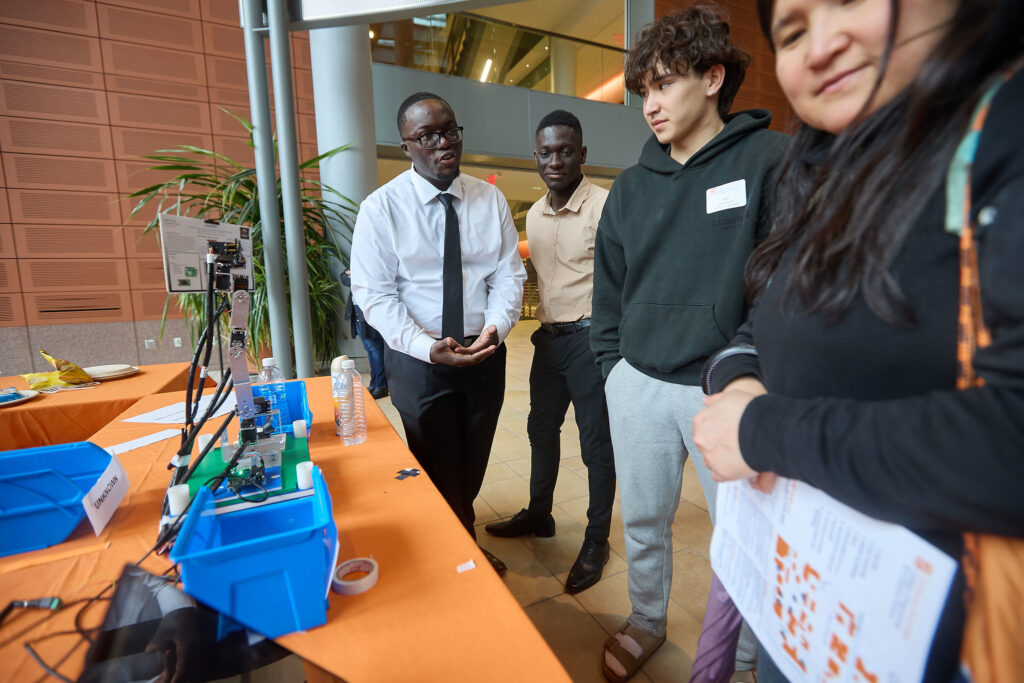
As engineering students Fundi Juriasi ‘24, Hanna Salem ‘24, Prince Sarquah ‘24 and Sukhleen Atwal ‘24 brainstormed ideas for their senior design project, they couldn’t seem to land on an idea they all agreed on. Sarquah’s interest lay in robotics, Juriasi was fascinated with face-tracking cameras, and Salem liked the idea of a Lego sorter that could assort the bright-colored blocks by color. Inspired by her passion for the environment, it wasn’t until Atwal combined their ideas that the group finally came to a project they all loved: a camera-tracking, plastic-sorting robot.
Plastic pollution continues to be a significant environmental issue, with millions of plastic items entering our planet’s oceans every year and this is often due to improper waste disposal. The engineering group’s plastic sorting robot shows promise in enhancing current waste management methods by automating the sorting process. They believe that this technology could play a crucial role in reducing landfill waste, increasing recycling rates, and promoting more sustainable practices.
“Most plastics come with recyclable code, but the problem is, sometimes the code gets damaged, and it can’t be seen without advanced cameras,” Juriasi says. “We wanted to make our project more achievable, so we placed QR codes on objects to mimic how it can be implemented in the real world.”
Their robot, ARMie, uses a camera to scan QR codes and identify the type of material based on the code. With instructions from the user interface, ARMie sorts each item into the appropriate bin for recyclable, non-recyclable, or further sorting. This innovative system streamlines the recycling process, enhancing its efficiency and accuracy.
The hardware consists of the microcontroller board Arduino Uno, a robotic arm, servo motors, a PWM/servo driver, a camera, bins, and a power supply. The key technologies and software used for the project include the open-source code-writing software Arduino IDE, Python, graphical user interface (GUI), and QR codes.
Despite the challenges that came with putting this ambitious project together such as mechanical durability and power supply balance, the students were able to present ARMie at the College of Engineering and Computer Science’s (ECS) Open House. “Overall, I would say this project was good. It has real-world applications and potential to impact sustainability,” says Salem.
“By integrating technology with environmental sustainability, ARMie facilitates a smarter way to manage waste, offering a significant step forward in our recycling efforts,” says Juriasi.
